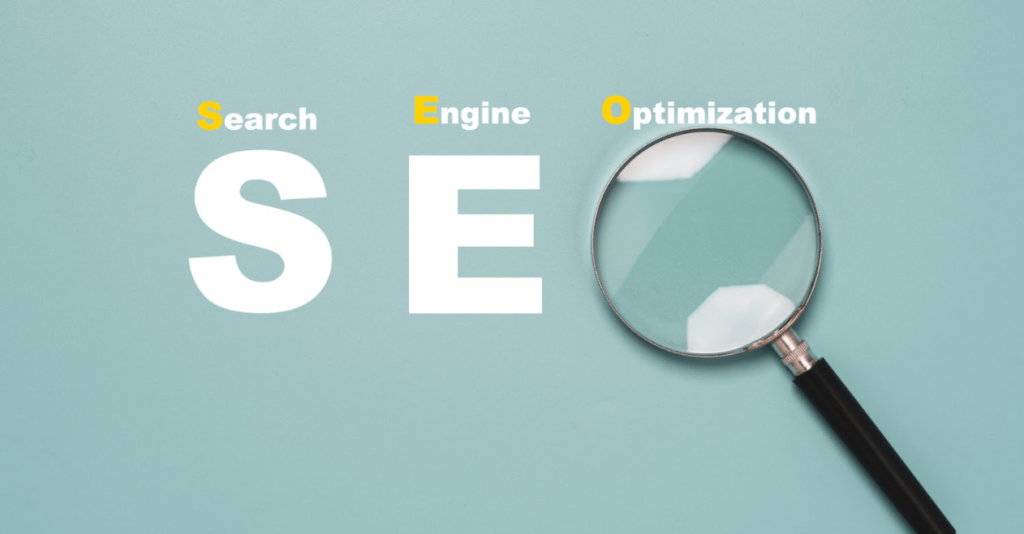If you’ve ventured into the digital domain of business, you’ve undoubtedly come across the term “SEO.” But what is it, really? Let’s take a deep dive into understanding the pillars of SEO and how it differs for B2B and B2C businesses.
Understanding the Foundations of SEO

Search Engine Optimization (SEO) is the art and science of making your website or content visible and attractive to search engines like Google. In layman’s terms? It’s about showing up on the first page of Google when someone searches for what you offer.
The Importance of SEO
SEO isn’t just about rankings; it’s about being accessible to your target audience. If you’re invisible online, you’re missing out on a world of potential customers. Plus, with the vastness of the internet, SEO helps ensure your business doesn’t get lost in the digital shuffle.
Difference between SEO for B2B and B2C
B2B and B2C have distinct audiences and intents. While B2B focuses on longer sales cycles and building relationships, B2C is about instant purchases and tapping into consumer needs. This affects keyword strategies, content approaches, and more.
Key Google Ranking Factors
There’s no secret sauce to topping Google, but there are known factors. These include site speed, mobile optimization, quality content, and relevant backlinks, among others.
Impact on User Experience
SEO isn’t just for Google’s eyes. A well-optimized site provides a smoother, more intuitive experience for users. Think faster load times, easy navigation, and engaging content!
Mobile SEO Considerations
With more people browsing on-the-go, mobile optimization is key. This means ensuring your site looks and functions well on mobile devices, not just desktops.
The SEO Lifecycle
SEO isn’t a one-time task. It’s a continuous process of:
- Research: Identifying keywords, understanding your audience, and scoping out the competition.
- On-Page SEO Optimization: Tweaking your site’s content, meta descriptions, tags, and structure.
- Off-Page SEO Optimization: Building quality backlinks and fostering external references.
- Measurement and Analysis: Using tools like Google Analytics to see what’s working.
- Ongoing Optimization: SEO trends change, and so should your strategy.
Local SEO Vs. Global SEO
Local SEO targets users in a specific region, while global SEO has a broader reach. For instance, a cafe in Boston would focus on local SEO, while a digital marketing agency might go global.
Importance of Local SEO
Local SEO helps businesses connect with local customers. Imagine someone searching for “best coffee near me” – with local SEO, your cafe can be their answer!
Techniques for Global SEO
Going global? Consider:
- Geo-Targeting: Tailoring content to specific regions or languages.
- Local Listings Management: Ensuring your business details are consistent across global directories.
- Global Link-Building Strategies: Securing backlinks from international websites to boost credibility.
Kickstarting B2B SEO Strategies

While the principles of SEO remain consistent, B2B businesses require a unique touch due to their specific audience and longer sales cycles. Let’s dive into the first steps of creating a robust B2B SEO strategy.
Keyword Research for B2B
The foundation of any SEO strategy lies in effective keyword research. But for B2B? It’s more nuanced.
- Understanding Persona Pain Points: Your B2B audience has distinct challenges they’re looking to solve. Understand these pain points to identify keywords they might be using.
- Competitor Keyword Analysis: Peek into your competitor’s keyword strategy. What are they ranking for? Any gaps you can fill?
- Utilizing Keyword Research Tools: Platforms like SEMrush or Ahrefs can be gold mines for B2B keyword research, offering insights into search volumes, difficulty, and more.
- Mapping Keywords to Buyer Journey: The B2B buyer’s journey can be long and winding. Align your keywords with the stages of AAARRR framework.
- Prioritization of Keywords: Not all keywords are created equal. Focus first on those with high search volume but lower competition, especially if they align closely with your offerings.
Creating Content that Resonates
Content is the lifeblood of B2B SEO. It’s about offering value, building trust, and positioning your business as an industry thought leader.
- Developing Topic Clusters: Think of topic clusters as an umbrella topic with related sub-topics. This helps in creating a structured content strategy.
- Crafting Pillar Pages: A pillar page is a comprehensive piece on a specific topic, linking out to related sub-topics. It serves as the backbone of your content ecosystem.
- Ensuring Content Relevance and Quality: Always ask – does this content address my audience’s needs? Is it well-researched and thorough?
- Engaging Formats (Webinars, Whitepapers): Diversify your content marketing. B2B audiences often value deep dives like webinars or whitepapers that offer in-depth knowledge.
- Measurement of Content Performance: Monitor metrics like page views, dwell time, and conversion rate to gauge how your content is performing.
Landing Page Optimization
Your landing page is the first impression you make on a potential B2B client. Make it count!
Key Components of a Converting Landing Page: A compelling headline, crisp content, visuals, testimonials, and a clear call to action (CTA) can elevate your landing page’s effectiveness.
- Importance of CTA: Your CTA guides visitors to the next step. Whether it’s signing up for a newsletter, scheduling a demo, or downloading a guide, make it clear and enticing.
- Utilizing On-Page SEO Checker Tools: Tools like Moz or Yoast can offer invaluable feedback on the SEO health of your landing page.
- Internal Linking Strategies: Keep visitors engaged by linking to relevant pages or content pieces on your site. It boosts dwell time and establishes authority.
- Analyzing User Engagement: Tools like Google Analytics or Hotjar can offer insights into how users interact with your landing pages. Where are they clicking? How long are they staying?
Understanding B2C SEO Dynamics

We’ve delved into the B2B realm, but now it’s time to turn our attention to the exciting and ever-evolving world of B2C SEO.
Let’s uncover the distinct dynamics that drive B2C businesses in the vast ocean of online searches.
Keyword Research for B2C
For B2C, keywords aren’t just words; they’re a window into your consumers’ desires.
- Understanding Consumer Behavior: Get inside your consumer’s head. What are they looking for? What problems are they trying to solve?
- Seasonal Keyword Trends: From Black Friday sales to summer essentials, tap into seasonal spikes to get ahead of the curve.
- Voice Search Optimization: “Hey Google, how can I increase user retention for my startup?” With the rise of smart assistants, optimizing for voice search is more crucial than ever.
- Long-Tail Keywords: While they might have lower search volumes, long-tail keywords often signal higher intent. Think “best growth marketing strategies for SaaS startups” vs. “growth marketing strategies.”
- User Search Intent Analysis: It’s not just about the keywords they’re using but why they’re using them. Are they looking to buy? Research? Compare?
Engaging Content Creation
Content is king, but for B2C, it’s got to not only inform but also captivate.
- Emotional Engagement: Your consumers are humans first. Tap into their emotions with storytelling and relatable narratives.
- Visual Content Strategies: A picture’s worth a thousand words, right? Use visuals – infographics, images, and videos – to engage and inform.
- User-Generated Content: Leverage reviews, testimonials, and social media posts from your consumers. It’s authentic and builds trust.
- Content Promotion Strategies: Creating content is half the battle. Promote it through social media, email marketing, and influencer partnerships.
- Monitoring Content Performance: Use analytics tools to measure engagement, traffic, and conversions. Refine your strategy based on what’s working.
Local SEO Strategies
For many B2C businesses, local consumers are the bread and butter.
- Optimizing for “Near Me” Searches: Ensure your business pops up when someone’s looking for services or products “near me.”
- Local Backlink Strategies: Secure backlinks from local websites, bloggers, or news outlets. It boosts credibility and visibility.
- Managing Online Reviews: Encourage happy customers to leave reviews and promptly address any negative feedback.
- Local Schema Markup: Use schema markup on your website to provide search engines with more detailed local information about your business.
- Google My Business Optimization: An optimized GMB listing can significantly boost your local visibility. Ensure accurate details, add photos, and encourage reviews.
SEO Technical Auditing

Imagine treating your website like a car. Just as a vehicle needs regular tune-ups, your site needs a technical audit. It’s how you ensure everything’s running smoothly under the hood.
Ready for a check-up?
Website Performance
- Speed Optimization: Think of this as the horsepower for your site. The faster it goes, the happier your visitors. Compress those chunky images, trim down that bulky code, and let’s get that website zipping along!
- Mobile Responsiveness: Ever tried squeezing into a shirt two sizes too small? That’s how your website feels on a phone if it’s not mobile-optimized. Ensure it adjusts smoothly to any screen size for a comfortable user experience.
- Browser Compatibility: Different browsers can view websites differently. Make sure yours looks polished, whether it’s on Chrome, Firefox, Safari, Edge, or any other platform.
- Core Web Vitals: Google’s recent buzzword. These are key factors that measure user experience, like loading performance, interactivity, and visual stability. Keep them in the green zone!
- SSL Implementation: Remember the seatbelt in our car analogy? SSL (Secure Socket Layer) ensures user data is encrypted and secure. It’s not just about safety; search engines favor secure sites.
Site Architecture
- URL Structure: Clean and descriptive URLs help both users and search engines understand what a page is about. Avoid complex jargon and stick to straightforward language.
- Internal Linking: This is like giving your visitors a roadmap of your site. Make sure they can easily find the treasure – your content!
- Navigation Optimization: A well-organized menu means your visitors won’t get lost. Keep it intuitive, straightforward, and decluttered.
- Breadcrumb Trails: No, we’re not talking about Hansel and Gretel. Breadcrumbs show users their path from the homepage to their current location. Handy, right?
- XML Sitemap and Robots.txt: These are your conversations with search engines. The sitemap tells them what to explore, while the robots.txt file highlights areas you’d rather they skip.
Error Monitoring and Resolution
- Identifying Crawl Errors: Sometimes, search engines stumble when exploring your site. Discover these hiccups to ensure they can smoothly crawl every corner.
- 404 and 301 Redirects: A 404 is like a roadblock, indicating a missing page. A 301 is your detour sign, redirecting users to the right place. Use them wisely!
- Monitoring Server Errors: If your site was a car, these would be engine issues. Keep an eye out to ensure there’s no downtime or major hitches.
- Identifying Indexing Issues: Ensure all your valuable pages are indexed. If search engines can’t see them, neither can your audience!
- Resolving Canonical Issues: Sometimes content can exist in multiple places, confusing search engines. Specify your preferred version to clear up any confusion.
Link-Building Techniques

In the intricate web of digital marketing, link-building stands out as one of the most pivotal techniques. It’s akin to networking in the real world. Just as professional relationships can propel your career, high-quality backlinks can propel your website’s ranking.
Let’s embark on a link-building journey that prioritizes genuine connections and top-notch quality.
Quality over Quantity
Identifying High-Quality Link Opportunities
Would you rather have ten acquaintances or two allies? Similarly, a few high-quality backlinks from authoritative sites are infinitely more valuable than numerous mediocre ones.
Google’s ever-evolving algorithms can differentiate between the two, ensuring that quality always reigns supreme.
How do you spot a golden link opportunity? A high-quality link typically comes from an authoritative site relevant to your niche. Using tools like Moz’s Domain Authority or Ahrefs’ Domain Rating can guide your efforts.
Engage with industry influencers, comment on authoritative blogs, and join forums to start building genuine relationships.
Avoiding Toxic Links
Like a bad apple in a barrel, toxic links can compromise your site’s reputation. Be vigilant! Regularly audit your backlinks using tools like SEMrush or Ahrefs, and disavow any suspicious or spammy links you encounter.
Monitoring Backlink Profile
Oversee your link portfolio as you would your finances. Using monitoring tools, keep an eye on your profile’s growth, the quality of incoming links, and anchor text distribution. A diversified backlink profile signifies healthy, organic growth.
Guest Posting Strategies
One of the most time-honored techniques in link-building is guest posting. By providing valuable content to another website, you’re not only showcasing your expertise but also earning a quality backlink. The key? Ensure your content is impeccable and genuinely beneficial to the host site’s audience.
Outreach Techniques for Link Acquisition
Warm outreach is the art of building relationships. Start by identifying potential link partners, then craft a personalized, compelling message. Be genuine, offer value, and express how a partnership could be mutually beneficial.
Competitor Backlink Analysis
Tools for Competitor Backlink Analysis
Know thy enemy! Tools like Ahrefs, SEMrush, and Moz allow you to dive deep into your competitor’s backlink strategies. By understanding their strengths and weaknesses, you can carve a clearer path for your own success.
Identifying Competitor Link Sources
Uncover where your competitors are getting their backlinks. Are they guest posting on certain sites? Engaging in forums or communities? Recognizing these sources can uncover new opportunities for your own link-building strategy.
Analyzing Competitor Link Profiles
Break down the quality, quantity, and relevance of your competitor’s backlinks. A comprehensive analysis can help you pinpoint gaps in your own strategy and identify potential areas for improvement.
Backlink Gap Analysis
By comparing your backlink profile with your competitors, you might spot some missed opportunities. Are there high-quality sites linking to your competitors but not to you? Those are potential avenues for your outreach.
Strategies for Outperforming Competitors
To be the best, learn from the rest. Identify what they’re doing right and implement it, but also spot their missteps and avoid them. Build more authoritative links, create content that engages, and foster genuine relationships in your niche.
Local Link-Building
Building Relationships with Local Businesses
In the local digital sphere, close-knit relationships matter immensely. Collaborate with local businesses for events or joint marketing efforts. Such partnerships not only foster community spirit but also yield quality local backlinks.
Local Directory Submissions
Directories like Yelp, Bing Places, and Google My Business are crucial for local SEO. Ensure your business is listed accurately, and encourage satisfied customers to leave positive reviews.
Local PR and Outreach
Engage with local media, bloggers, and influencers. A feature in a local newspaper or a shoutout from a local influencer can significantly boost your local link profile.
Sponsorship and Event Participation
Supporting local events or sponsoring community initiatives showcases your brand’s commitment to the community while also securing valuable local backlinks.
Utilizing Local Keywords in Anchor Text
When building local links, it’s beneficial to incorporate local-specific keywords in your anchor texts. This reinforces your local relevance and boosts your local SEO efforts.
Working with an SEO agency can help you leverage these insights effectively to enhance your own link-building efforts.
Measurement and Analytics

Measurement and analytics – it’s where science meets magic in the realm of SEO. Without measurement, even the most exquisite SEO strategy can remain just a shot in the dark. Analytics turn our assumptions into certainties and our strategies into victories. Let’s set the stage to measure, analyze, and thrive!
Setting Up SEO Metrics
- Identifying Key Performance Indicators (KPIs): These are your North Stars guiding your SEO voyage. From organic traffic to bounce rate, each KPI offers insights into your strategy’s efficacy.
- Setting Up Goals in Google Analytics: Goals allow you to measure how well your site fulfills your target objectives. It’s like having a personal fitness tracker for your website!
- Tracking Rankings and Organic Traffic: Keep a keen eye on your position in search engine results. Rising up? Great! Falling down? Let’s pivot.
- Measuring Engagement Metrics: Pageviews, average session duration, and web pages per session. These metrics can reveal if your content truly resonates with the audience.
- Analyzing Conversion Rate: Not just about traffic; SEO is about results. Monitor how many visitors transform into loyal customers.
Advanced Analytics Techniques
- Attribution Modeling: Discover the paths your users tread before they convert. It’s the story behind every click, impression, and purchase.
- User Behavior Analysis: Dive deep into the user psyche. What do they want? Why did they leave? Analytics can give you these answers.
- Heatmaps and Session Replays: Visualize where users click, scroll, and how they navigate your site. It’s like watching a movie of your user’s journey.
- Split Testing for SEO: A/B testing isn’t just for marketers. Test variations of your SEO strategies to find what truly works.
- Predictive Analytics in SEO: Use past and current data to predict and strategize for future SEO trends.
Reporting and Visualization
- SEO Dashboards: Create a cockpit view of all your SEO metrics. A centralized place to gauge your performance at a glance.
- Custom Reporting: Tailor-made reports for specific needs. Whether it’s for a team meeting or a client pitch, have the right data ready.
- Tools for SEO Reporting: Platforms like Moz, SEMrush, or Ahrefs can empower your analytics and streamline reporting.
- Sharing Insights with Teams: An informed team is a powerful team. Share, educate, and brainstorm.
- Actionable Insights from SEO Data: Data on its own is just numbers. The real magic lies in the actionable insights and strategies you derive from it.
The Future of SEO

The digital landscape is ever-evolving. With innovations emerging at breakneck speed, SEO isn’t just about keywords anymore.
The fusion of AI and the surge of voice search signal a new dawn for SEO. Let’s take a glimpse into the future and prepare to ride the next big wave!
Understanding AI’s Role in SEO
- Algorithm Updates and AI: Gone are the days of mere manual algorithm tweaks. AI-driven algorithms like Google’s RankBrain continuously learn and adapt in real-time, crafting more relevant search results.
- Predictive Analysis: Imagine knowing what your user wants even before they do! With AI, predictive SEO taps into patterns, making anticipatory content strategies a reality.
- AI in Content Creation and Optimization: Tools powered by AI, like GPT-4, can now craft content, suggest optimization tweaks, and even predict how well a piece might perform.
- Chatbots and Customer Service: Available 24/7, AI-driven chatbots ensure seamless user experiences, guiding visitors and answering queries instantly.
- AI for SEO Automation: From automated keyword research to real-time analytics, AI streamlines SEO tasks, making strategies more efficient and responsive.
Voice Search Optimization
- Importance of Voice Search: “Hey Siri, what are the top growth-marketing strategies for startups?” Sound familiar? As voice assistants become household staples, optimizing for voice search is no longer optional – it’s essential.
- Long-Tail Keywords and Conversational Queries: Voice searches are often longer and more conversational. Think “Which startups have the most successful user acquisition campaigns?” rather than just “successful user acquisition.”
- Local SEO for Voice Search: Voice searchers often look for local solutions. Optimizing for local means ensuring you’re the answer when someone asks their device for recommendations “near me.”
- Voice Search Devices and Platforms: It’s not just phones. From Alexa to Google Home, ensure compatibility across platforms and devices.
- Measuring Voice Search Traffic: Dive into analytics specific to voice. Understand the queries, and user intent, and capitalize on those insights.
Preparing for SEO Innovations
- Staying Updated with SEO Trends: SEO isn’t static. Regularly refresh your knowledge, subscribe to industry news, and always have an ear to the ground.
- Adapting to New Technologies: Augmented Reality (AR), Virtual Reality (VR) , the Internet of Things (IoT)… the list goes on. Be prepared to tweak your SEO strategies as these technologies gain prominence.
- Continuous Learning and SEO Training: Upskill regularly. From courses to webinars, ensure you and your team are always at the forefront.
- Community Engagement and SEO Networks: Join forums, attend conferences, and be active in online groups. Collective wisdom often sparks individual brilliance.
- Experimentation and Adaptability in SEO Strategies: Don’t fear the unknown. Test new tools, experiment with strategies, and be ready to pivot.
Seizing the SEO Horizon

In our journey through the realms of SEO, we’ve navigated the intricacies of link-building, dove deep into the world of analytics, and gazed into the future where AI and voice search beckon. The golden thread? SEO is an ever-evolving landscape where staying updated and agile is the key.
As we brace for the exciting transformations ahead, remember this: your website is more than just a digital address; it’s a dynamic entity pulsating in the vast digital cosmos.
So, let’s not just keep up; let’s lead. Dive into forums, experiment with new tools, engage with the community, and embrace the continual learning curve. Because in the world of SEO, the best view is always from the cutting edge.
Ready to conquer the digital realm? Start today!

